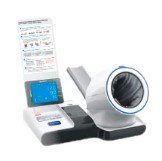Navigating Global Supply Chain Disruptions in Medical Labs and Phlebotomy Facilities in the United States
Summary
- Global Supply Chain disruptions impact medical labs and phlebotomy facilities in the United States.
- Challenges include delays in receiving essential supplies, increased costs, and potential quality issues.
- Adapting to these challenges requires effective communication, strategic planning, and alternative sourcing options.
Introduction
Medical labs and phlebotomy facilities play a critical role in the healthcare system by providing essential diagnostic services to patients. However, these facilities often face challenges in managing their Supply Chain, especially when it comes to sourcing necessary equipment, reagents, and other supplies from overseas. In recent years, global Supply Chain disruptions have posed significant challenges for medical labs and phlebotomy facilities in the United States, affecting their ability to deliver timely and accurate Test Results to patients.
Global Supply Chain Disruptions
The Covid-19 pandemic has brought to light the vulnerabilities of global supply chains, as countries around the world experienced disruptions in the production and distribution of essential medical supplies. Medical labs and phlebotomy facilities in the United States rely on a complex network of suppliers from different countries to obtain the necessary materials for conducting tests. When there are disruptions in the Supply Chain, these facilities may face the following challenges:
- Delays in receiving essential supplies: Shipping delays, production shutdowns, and export restrictions in other countries can lead to delays in receiving critical supplies, such as test kits, reagents, and protective equipment.
- Increased costs: When Supply Chain disruptions occur, the cost of sourcing materials from alternative suppliers may increase significantly, putting a strain on the budgets of medical labs and phlebotomy facilities.
- Potential quality issues: In some cases, facilities may be forced to source supplies from unfamiliar suppliers due to disruptions in their regular Supply Chain. This can lead to quality issues and impact the accuracy of Test Results.
Strategies for Managing Supply Chain Challenges
To effectively manage Supply Chain challenges, medical labs and phlebotomy facilities in the United States can consider the following strategies:
- Effective communication: Maintaining open communication with suppliers and staying informed about potential disruptions in the Supply Chain can help facilities anticipate and address issues before they escalate.
- Strategic planning: Developing contingency plans and diversifying suppliers can help mitigate the impact of Supply Chain disruptions and ensure that facilities have access to essential materials when needed.
- Alternative sourcing options: Exploring local sourcing options and building relationships with domestic suppliers can provide facilities with more reliable and cost-effective alternatives to overseas suppliers.
Conclusion
Global Supply Chain disruptions can pose significant challenges for medical labs and phlebotomy facilities in the United States, impacting their ability to provide essential diagnostic services to patients. By implementing effective communication strategies, strategic planning, and alternative sourcing options, these facilities can better navigate Supply Chain challenges and ensure that they have access to the materials needed to deliver quality healthcare services.

Disclaimer: The content provided on this blog is for informational purposes only, reflecting the personal opinions and insights of the author(s) on the topics. The information provided should not be used for diagnosing or treating a health problem or disease, and those seeking personal medical advice should consult with a licensed physician. Always seek the advice of your doctor or other qualified health provider regarding a medical condition. Never disregard professional medical advice or delay in seeking it because of something you have read on this website. If you think you may have a medical emergency, call 911 or go to the nearest emergency room immediately. No physician-patient relationship is created by this web site or its use. No contributors to this web site make any representations, express or implied, with respect to the information provided herein or to its use. While we strive to share accurate and up-to-date information, we cannot guarantee the completeness, reliability, or accuracy of the content. The blog may also include links to external websites and resources for the convenience of our readers. Please note that linking to other sites does not imply endorsement of their content, practices, or services by us. Readers should use their discretion and judgment while exploring any external links and resources mentioned on this blog.
